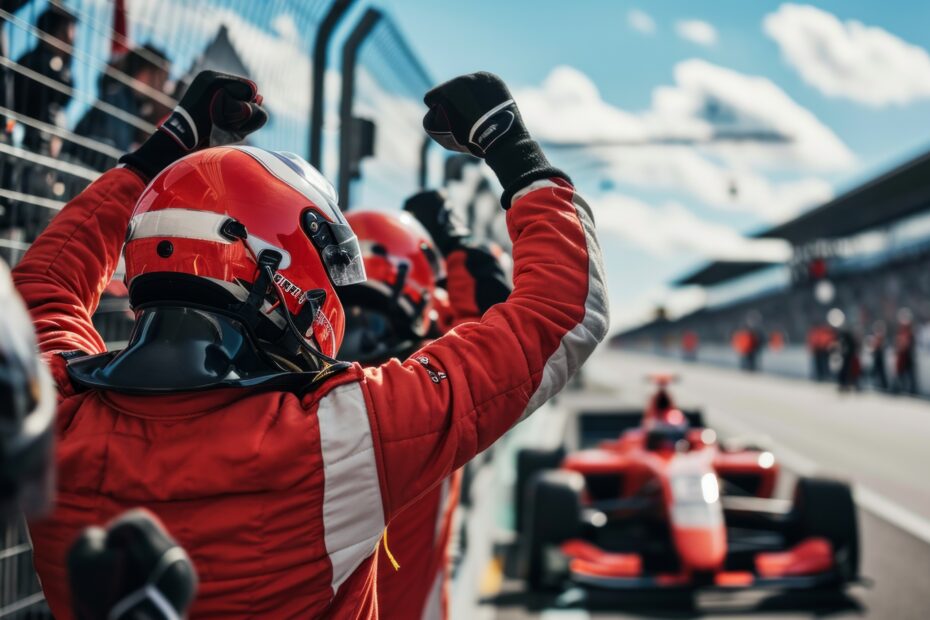As an entrepreneur deeply immersed in both technology and car racing, I constantly explore how these two worlds intersect. This blend of passions offers me a unique perspective on the remarkable ways technology enhances safety in motorsports. Understanding the pervasive influence of technology is crucial to my work. I am especially captivated by its role in elevating various aspects of life, including the racetrack. One of the most impactful areas where technology is making significant strides is in enhancing safety at race tracks. With advancements in AI and real-time monitoring, we’re seeing unprecedented improvements in safety protocols. This is reshaping the landscape of motorsports.
The Evolution of Safety in Motorsports
Safety in motorsports has come a long way since the early days of racing. Decades ago, the sport was notoriously dangerous, with minimal protective gear and rudimentary safety measures. However, advancements in technology have revolutionized the industry, making it significantly safer for drivers, teams, and fans alike.
Advanced Safety Features in Modern Race Cars
Modern race cars are equipped with a plethora of advanced safety features, thanks to continuous innovations in technology. These features are designed to protect drivers during high-speed crashes and reduce the risk of injury.
- The Halo Device: One of the most notable advancements in recent years is the introduction of the halo device in Formula 1. This titanium structure, positioned above the cockpit, provides crucial protection to the driver’s head in the event of a collision or debris impact. Since its implementation, the halo device has been credited with saving several lives on the track.
- Crash Sensors: High-tech crash sensors are now standard in many race cars. These sensors collect data during an impact, allowing engineers to analyze the crash and develop even safer designs. This real-time data is invaluable for understanding the dynamics of crashes and improving future safety measures.
- Driver Safety Suits: Modern driver safety suits are made from advanced materials like Nomex, which is fire-resistant and provides thermal protection. These suits are also equipped with sensors that monitor the driver’s vital signs, allowing medical teams to respond quickly in case of an emergency.
Enhancing Track Safety with Smart Infrastructure
It’s not just the cars that are getting safer; race tracks themselves are becoming smarter and more secure, thanks to cutting-edge technology.
Real-Time Monitoring Systems
Many race tracks have implemented real-time monitoring systems that use a network of cameras and sensors to keep a close eye on the track conditions and detect potential hazards. These systems can quickly alert race officials to any incidents, allowing for a swift response to accidents and improving overall track safety.
For instance, the Circuit de Spa-Francorchamps in Belgium has installed a sophisticated monitoring system that provides real-time data on weather conditions, track temperature, and vehicle positions. This information is crucial for race control to make informed decisions and ensure the safety of everyone on the track.
Advanced Barrier Systems
Safety barriers have also seen significant technological advancements. Modern barriers are designed to absorb and dissipate the energy from crashes, reducing the impact force on the driver. The use of Tecpro barriers, for example, has become widespread in many top-tier racing events. These barriers are made from high-density polyethylene and filled with foam, providing superior impact absorption compared to traditional tire barriers.
Case Studies: Technology in Action
The implementation of advanced safety technologies at race tracks is not just theoretical; it is happening in real-time, with tangible results.
Formula 1: A Leader in Safety Innovation
Formula 1 is at the forefront of safety innovation. The sport’s governing body, the FIA, continuously invests in research and development to improve safety standards. This includes the introduction of the halo device, advanced crash testing procedures, and the development of new materials for driver safety gear. The FIA’s commitment to safety has made Formula 1 one of the safest motorsports, despite the high speeds and inherent risks.
NASCAR’s Safety Initiatives
NASCAR has also made significant strides in enhancing safety through technology. The implementation of the SAFER (Steel and Foam Energy Reduction) barrier system at tracks across the United States has greatly improved crash safety. Additionally, NASCAR’s use of data analytics to monitor and analyze crash impacts has led to the development of safer car designs and improved driver protection protocols.
The Future of Safety in Motorsports
As technology continues to evolve, so too will the safety measures in motorsports. Future advancements may include even more sophisticated real-time monitoring systems, AI-driven predictive analytics to anticipate and prevent accidents, and further improvements in materials science to create lighter, stronger, and safer race cars.
Conclusion
As someone who loves both technology and motorsports, I am excited to see how these advancements continue to shape the future of the sport. The integration of advanced safety technologies is making racing safer for everyone involved, from drivers to pit crews to fans. By leveraging the power of technology, we are not only enhancing the thrill and excitement of motorsports but also ensuring that safety remains a top priority. For me, this is the ultimate example of how innovation can elevate the world around us, both on and off the race track.
If you want to learn more about technological innovation in motor-sports, check out our blog for more information. frontrangesystems.com
Interested in similar topics? Check out our LinkedIn newsletter for more information. Subscribe on LinkedIn
